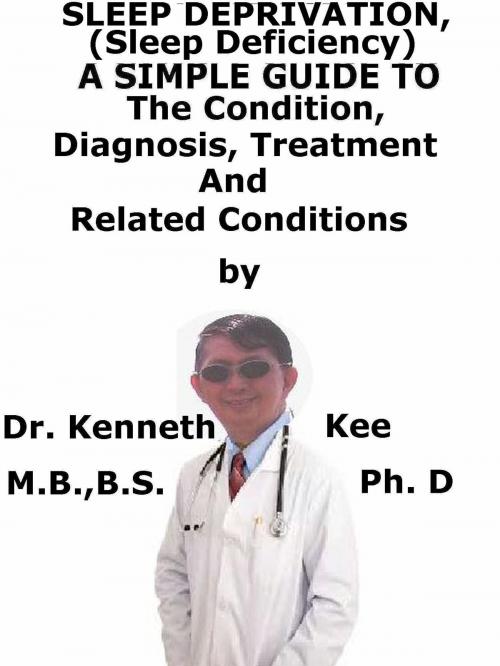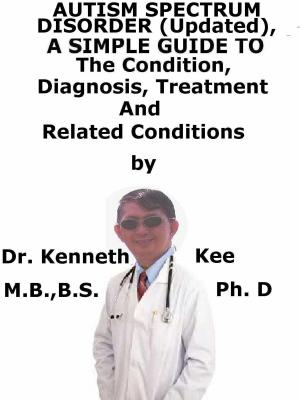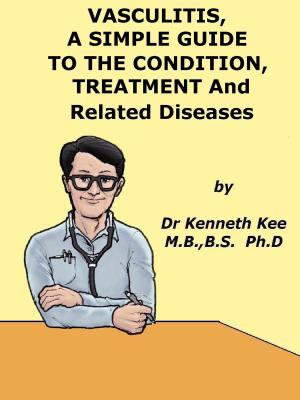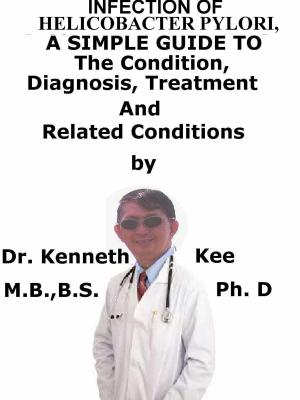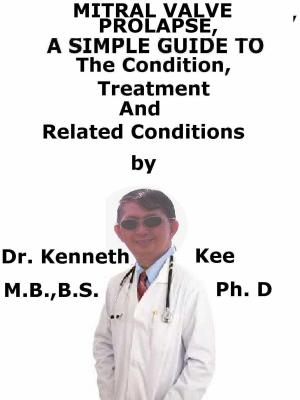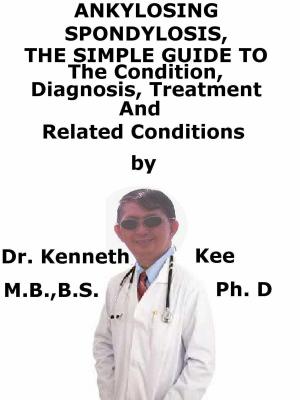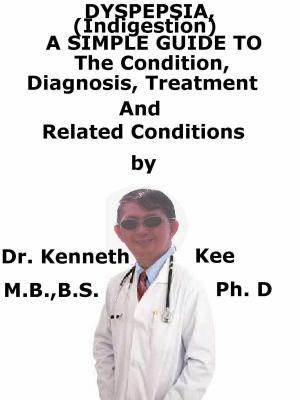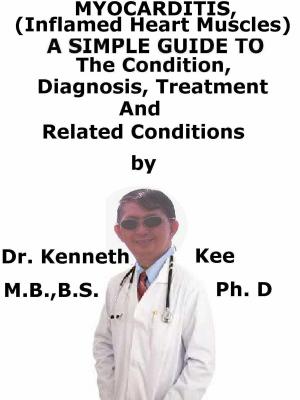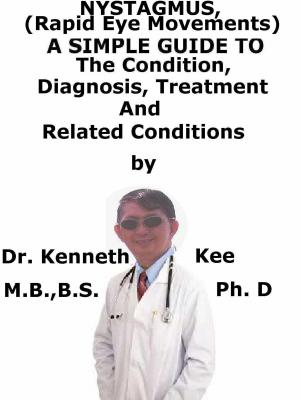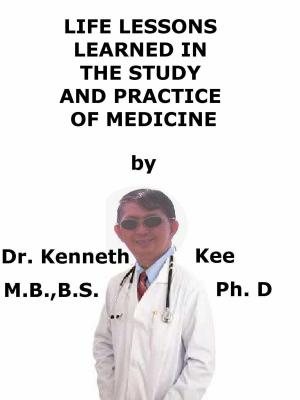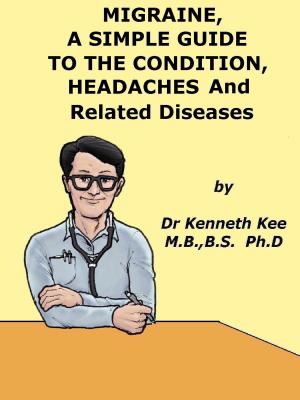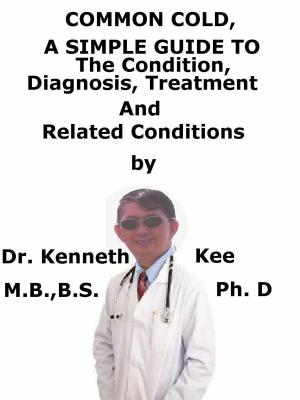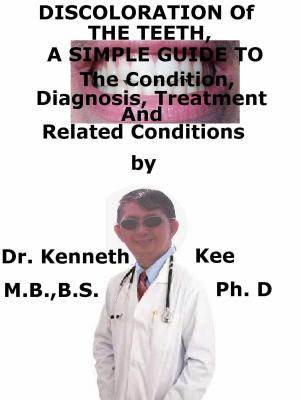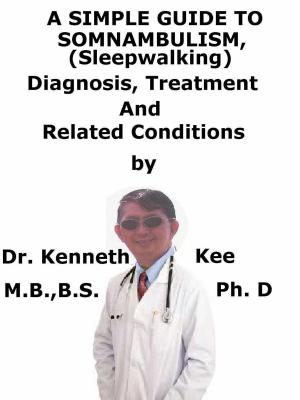Sleep Deprivation (Sleep Deficiency), A Simple Guide To The Condition, Diagnosis, Treatment And Related Conditions
Nonfiction, Health & Well Being, Medical, Specialties, Internal Medicine, Neurology, Health| Author: | Kenneth Kee | ISBN: | 9781370815906 |
| Publisher: | Kenneth Kee | Publication: | December 17, 2016 |
| Imprint: | Smashwords Edition | Language: | English |
| Author: | Kenneth Kee |
| ISBN: | 9781370815906 |
| Publisher: | Kenneth Kee |
| Publication: | December 17, 2016 |
| Imprint: | Smashwords Edition |
| Language: | English |
Sleep deprivation is the medical disorder of a person not having enough sleep.
Sleep deficiency has a wider implication.
It occurs if the person has one or more of:
1. Not having enough sleep (sleep deprivation)
2. Sleeping at the wrong time of day (out of sync with the body's natural clock)
3. Not sleeping well or getting all of the different forms of sleep that the body needs
4. Having a sleep disorder that prevents the person from getting enough sleep or induces poor quality sleep
The amount of sleep that a person requires differs from one person to another
On average most adults require about seven to eight hours of sleep each night to feel alert and well rested.
Teens require an average of about nine hours of sleep per night
Children require nine hours of nightly sleep or more, depending on their age.
About one in five adults are not able to get enough sleep.
Acute sleep deprivation indicates a period of 1 night, or a few nights, without sleep or with curtailed sleep.
Chronic sleep deprivation indicates a prolonged period of time (weeks, months, or years) without sleep or with curtailed sleep.
A chronic sleep-restricted state can induce:
1. Fatigue,
2. Daytime sleepiness,
3. Clumsiness and
4. Weight loss or weight gain.
It adversely affects the normal functioning of the brain.
Total sleep deprivation indicates the avoidance of sleep for a period of at least 1 night.
Partial sleep deprivation, or sleep restriction, indicates the reduction in the total sleep time relative to one's normal baseline during a 24-hour period.
This is probably the most frequent type of sleep deprivation observed in daily life.
Closely related to sleep deprivation is the process of sleep fragmentation which indicates the interruption of sleep by brief awakenings (arousals), such as environmental noise or physical discomfort, normally observed as an acceleration of the electroencephalographic (EEG) frequency for a few seconds.
Sleep fragmentation is linked with a higher number in awakenings (arousals) and a decrease of deep (delta) sleep, and can increase daytime sleepiness
The diagnosis of sleep deprivation should take into account:
1. Miscellaneous sleep disorders,
2. NREM parasomnias, and
3. Rapid eye movement (REM)–related parasomnias.
One which is commonly done in medical sleep laboratory settings is the multiple sleep latency tests.
The only best way for a patient to counter sleep deprivation is to increase nightly sleep time to satisfy his or her biological sleep requirement; there is no substitute for enough sleep.
1. Go to bed at the same time nightly
2. Get adequate sleep
3. Avoid napping
4. Avoid stress, fatigue and sleep deprivation
5. Moderate or relaxation exercises
6. Avoid any kind of stimuli prior to bedtime
Proper sleep hygiene should be maintained.
Medical help should be sought if the patient feels that the patient is not sleeping well
TABLE OF CONTENT
Introduction
Chapter 1 Sleep Deprivation (Sleep Deficiency)
Chapter 2 Causes
Chapter 3 Symptoms
Chapter 4 Diagnosis
Chapter 5 Treatment
Chapter 6 Prognosis
Chapter 7 Sleep Walking
Chapter 8 Nightmare Disorder
Epilogue
Sleep deprivation is the medical disorder of a person not having enough sleep.
Sleep deficiency has a wider implication.
It occurs if the person has one or more of:
1. Not having enough sleep (sleep deprivation)
2. Sleeping at the wrong time of day (out of sync with the body's natural clock)
3. Not sleeping well or getting all of the different forms of sleep that the body needs
4. Having a sleep disorder that prevents the person from getting enough sleep or induces poor quality sleep
The amount of sleep that a person requires differs from one person to another
On average most adults require about seven to eight hours of sleep each night to feel alert and well rested.
Teens require an average of about nine hours of sleep per night
Children require nine hours of nightly sleep or more, depending on their age.
About one in five adults are not able to get enough sleep.
Acute sleep deprivation indicates a period of 1 night, or a few nights, without sleep or with curtailed sleep.
Chronic sleep deprivation indicates a prolonged period of time (weeks, months, or years) without sleep or with curtailed sleep.
A chronic sleep-restricted state can induce:
1. Fatigue,
2. Daytime sleepiness,
3. Clumsiness and
4. Weight loss or weight gain.
It adversely affects the normal functioning of the brain.
Total sleep deprivation indicates the avoidance of sleep for a period of at least 1 night.
Partial sleep deprivation, or sleep restriction, indicates the reduction in the total sleep time relative to one's normal baseline during a 24-hour period.
This is probably the most frequent type of sleep deprivation observed in daily life.
Closely related to sleep deprivation is the process of sleep fragmentation which indicates the interruption of sleep by brief awakenings (arousals), such as environmental noise or physical discomfort, normally observed as an acceleration of the electroencephalographic (EEG) frequency for a few seconds.
Sleep fragmentation is linked with a higher number in awakenings (arousals) and a decrease of deep (delta) sleep, and can increase daytime sleepiness
The diagnosis of sleep deprivation should take into account:
1. Miscellaneous sleep disorders,
2. NREM parasomnias, and
3. Rapid eye movement (REM)–related parasomnias.
One which is commonly done in medical sleep laboratory settings is the multiple sleep latency tests.
The only best way for a patient to counter sleep deprivation is to increase nightly sleep time to satisfy his or her biological sleep requirement; there is no substitute for enough sleep.
1. Go to bed at the same time nightly
2. Get adequate sleep
3. Avoid napping
4. Avoid stress, fatigue and sleep deprivation
5. Moderate or relaxation exercises
6. Avoid any kind of stimuli prior to bedtime
Proper sleep hygiene should be maintained.
Medical help should be sought if the patient feels that the patient is not sleeping well
TABLE OF CONTENT
Introduction
Chapter 1 Sleep Deprivation (Sleep Deficiency)
Chapter 2 Causes
Chapter 3 Symptoms
Chapter 4 Diagnosis
Chapter 5 Treatment
Chapter 6 Prognosis
Chapter 7 Sleep Walking
Chapter 8 Nightmare Disorder
Epilogue
